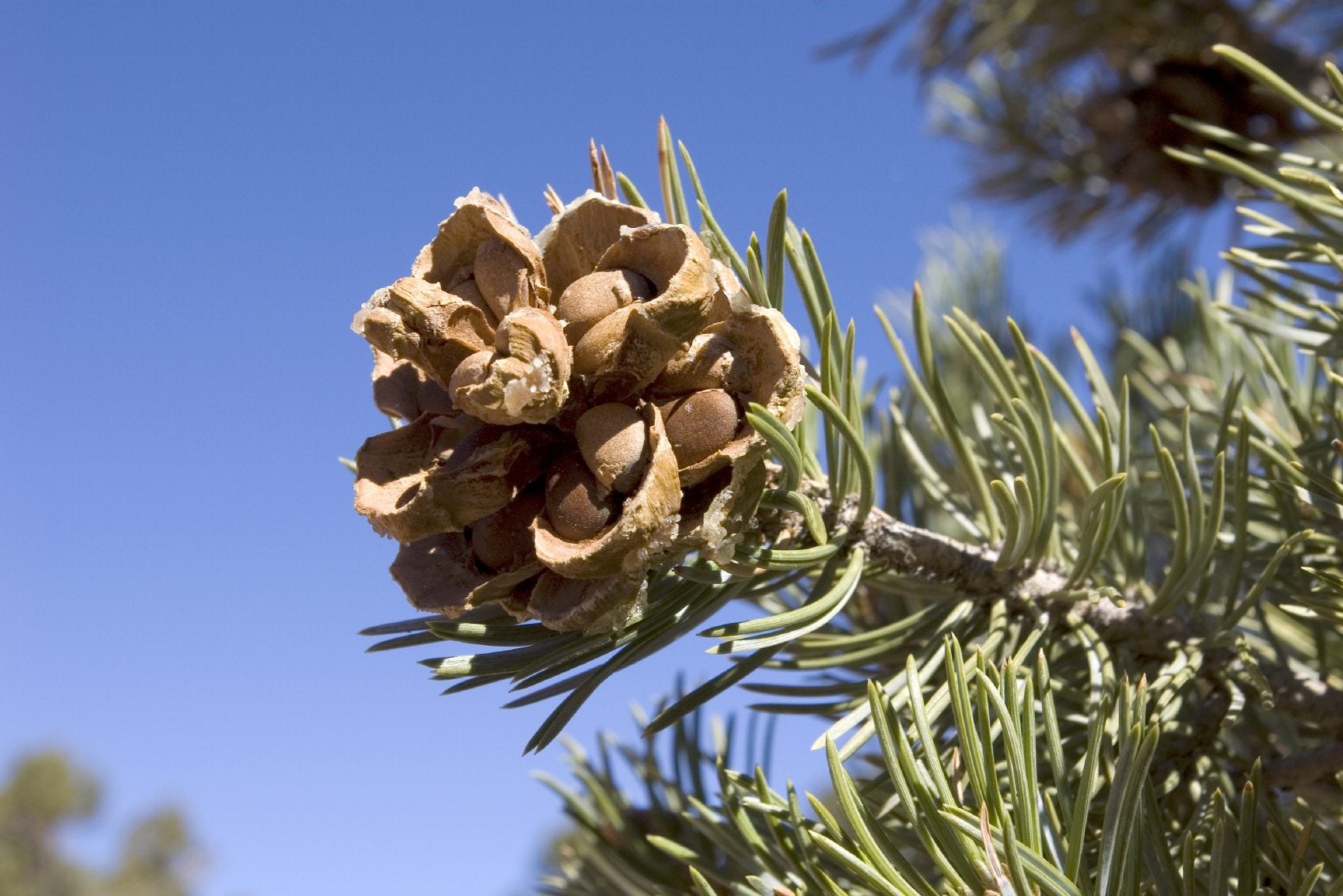Where Do Pine Nuts Come From: Learn About Growing Pine Nut Trees


Pine nuts are a staple in many indigenous cuisines and have migrated to the United States as a part of our family table. Where do pine nuts come from? The traditional pine nut is the seed of stone pines, native to the Old Country and not widely grown in North America.
These tasty seeds are harvested from the tree's cones and are just one of 20 species of edible pine nuts. There are several pine trees that will produce reasonably sized seeds for harvesting that will thrive in North American regions. Once you know how to grow pine nuts, you can store seeds for up to a year for your family's use.
How to Grow Pine Nuts
Toasted pine nuts in salads, pastas, pesto, and other dishes add a nutty crunch and earthy flavor to any recipe. Pine nut harvesting is an arduous process and adds to the hefty price tag fetched by most producers of the seeds. As a backyard specimen, pine nut trees are strong, attractive, long-lived plants that add architectural appeal.
There are several American pine trees that are useful as nut trees, any of which can be purchased as two or three year plants or bigger or may be sown from fresh seed. Pinus pinea is the specimen of pine from which most commercial nuts are harvested. When growing pine nuts, choose a variety of pine with large enough seeds to easily harvest and a tree that is adaptable to your region.
Fortunately, most pine trees are very tolerant of a wide range of soils and climates. Most are hardy to USDA zones 1 to 10, although the exact zone will depend upon the variety. Pine nut trees may range from 200 foot tall (61 m.) monsters to more manageable 10 foot tall (3 m.) bushes. Four species to try with good sized nuts and easy care are:
- Swiss stone pine (Pinus cembra)
- Korean pine (Pinus koraiensis)
- Colorado pinyon pine (Pinus edulis)
- Single-leaf pinyon (Pinus monophylla)
Check with reputable dealers for viable seed or potted plants ready to go into the ground.
What to Expect When Growing Pine Nuts
Pine trees will start producing cones with sizable seeds in six to ten years. This isn't a quick commitment, obviously, as you will have to care for the tree for many years before you can expect to be harvesting nuts.
Most pine nut species can thrive in variable soils, from wet clay to sandy, dry loam. Adding organic matter to the planting site and ensuring good drainage will promote a faster growing tree that will produce more nuts. Plants have some drought tolerance for short periods, but providing average moisture will also ensure better plant health and growth.
Once you have mature healthy trees, you can harvest the cones, but don't expect a bumper crop. Cone production is influenced by climate and weather, and each cone may only contain 35 to 50 seeds. That's a lot of harvesting to get pine nuts to feed an entire family.
Pine Nut Harvesting
When trees are producing large cones, it's time to harvest. Depending upon the height of your tree, this may pose the biggest problem in pine nut production. Use a hook or rent a commercial tree shaker to dislodge cones.
You can also pick up mature cones from the ground but be quick about it! Numerous animal and bird species also find the seeds delicious and there will be fierce competition for the nuts.
Once you have cones, you need to cure and extract them. The easiest way to do this is to place the cones in a burlap bag in a warm, dry area. When cones are completely dry, give the bag a good whack to break open the cones and release the seed. Now you need to pick them out of the chaff and allow the seeds to dry. If you think you are done once the seed is dry, think again.
Pine nuts have a hull, or shell, surrounding the tender meat. Use a small nutcracker to remove the hull. Seeds can be frozen or toasted. Frozen seeds last for months while the oil-rich toasted seeds should be used within a couple of weeks to prevent oil from turning rancid and ruining the flavor of the seed.

Bonnie Grant is a professional landscaper with a Certification in Urban Gardening. She has been gardening and writing for 15 years. A former professional chef, she has a passion for edible landscaping.